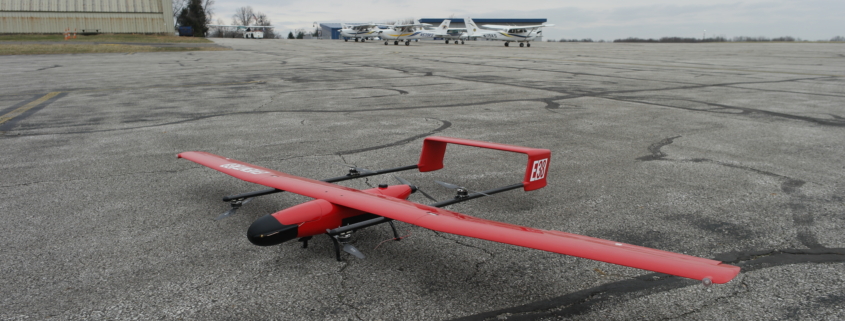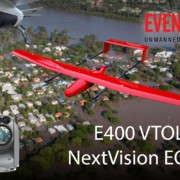3D-Printed Antenna Demonstrated on E400 Drone
Earlier this year, Event 38 Unmanned Systems successfully flew a drone fitted with a 3D-printed antenna at Kent State University. The project, backed by the Ohio Federal Research Network (OFRN), was a collaboration between Event 38, Kent State University, Youngstown State University, and Youngstown Business Incubator (YBI), who led the project.
Event 38 consulted with YBI to explore the possibility of creating a 3D-printed antenna to replace the nose cone on the E400, an Event 38 mapping drone.
“3D printing is an exciting option for creating geometrically complex components, such as antennas,” said Jeff Taylor, CEO of Event 38. “Traditional manufacturing methods, such as machining, aren’t optimal for unusual shapes, which can require a lot of tooling and produce significant waste material. 3D printing is much more efficient for certain geometries.”
YBI experimented with different 3D-printed antenna designs to find one that matched the dimensional needs of the E400 and achieved the right frequency and distribution pattern.
The 3D-printed antenna created by YBI was fully integrated on the E400 and flown at an OFRN project demonstration at Kent State University.
“Geometrically complex 3D-printed antennas are very promising technology,” said Taylor. “In partnership with YBI, we proved the feasibility of a dual-purpose nose cone that served as both antenna and aerodynamic structure. But there’s potential to create structural parts, too. We could print a loadbearing piece that also serves as an antenna and thus replace a structural element, which reduces the overall weight of the aircraft.”
There are several applications in which full integration of the antenna into the existing shape of the aircraft is beneficial. In virtually any context, an integrated antenna is safer from bumps and damage than a whip antenna that protrudes from the plane. In the context of a hypersonic aircraft, a protruding antenna requires extra heat shielding, whereas an antenna that integrates with the shape of the fuselage could withstand both heat and hypersonic airflow without compromising performance.
Light weighting can also contribute meaningfully to overall performance of an unmanned aircraft. A lighter drone can fly longer and handle a heavier payload on the same amount of power.
Taylor is optimistic about the future of 3D-printed antenna and other sensors. “There may be long-term benefits we haven’t even realized yet. It could change the way we design and build drones in the future.”
To learn more about Event 38 or the E400, visit www.event38.com.






